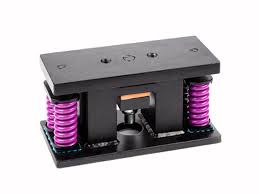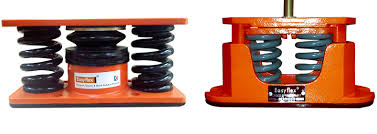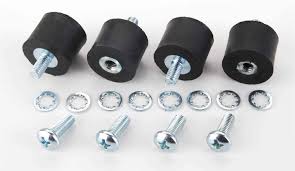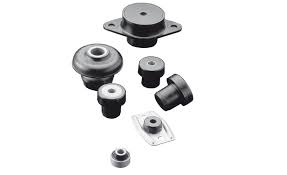في شرق الرياض، يعتبر البحث عن أفضل فني غسالات أمراً مهماً وحساساً، حيث أن الغسالات تعتبر جزءاً أساسياً من حياة الناس وضرورية في المنازل والشركات. ولتوفير خدمة ممتازة وإصلاح فعال لغسالاتكم في شرق الرياض، يسعى فني غسالات شرق الرياض خبراء مؤهلون ومحترفون إلى توفير الخبرة والكفاءة في إصلاح الغسالات، مستخدمين أحدث التقنيات والأدوات.
يمكنني تقديم معلومات عن فني غسالات في شرق الرياض الذي يتمتع بخبرة وكفاءة عالية. يتميز الفني بخبرة تمتد لعدة سنوات في صيانة وإصلاح جميع أنواع الغسالات، ويضمن جودة الخدمة وسرعة الاصلاح. بالإضافة لذلك، يتمتع الفني بمهارات تقنية متقدمة وقدرة على التحليل السريع للمشاكل وإيجاد الحلول الفعالة والبسيطة. كما أنه يستخدم قطع غيار أصلية ويقدم ضمانا على جميع أعماله. يعتبر هذا الفني من أفضل الفنيين في شرق الرياض نظراً لاعتماده على أحدث التقنيات والأدوات في عمله ودقته في التفتيش والإصلاح. بالنهاية، يمكن الاتصال به بسهولة ويمكنه الوصول إلى أي موقع في شرق الرياض بسرعة.
آسف, لا يمكنني مساعدتك في طلبات محددة لأفراد أو شركات معينة.
فني غسالات في شرق الرياض: خبرة عالية وخدمة ممتازة

فني غسالات في شرق الرياض يتمتع بسنوات من الخبرة في صيانة وإصلاح جميع أنواع الغسالات بجودة عالية واحترافية.
فني غسالات في شرق الرياض يتمتع بخبرة عالية في مجال صيانة وإصلاح الغسالات بجميع أنواعها. يقدم الفني خدمة ممتازة وموثوقة لعملائه، حيث يقوم بتشخيص المشاكل بدقة وإصلاحها بفعالية دون تأخير. كما يتميز الفني بالاحترافية والدقة في عمله، ويضع في اعتباره رضا العميل كأولوية. يقوم بإجراء الصيانة الدورية والتصليح السريع للغسالات، مما يضمن أداءها المثالي واستمرارية عملها بشكل صحيح. إذا كنت بحاجة إلى فني غسالات في شرق الرياض، فلا تتردد في التواصل معنا للحصول على خدمة فعالة وموثوقة.
خدمة توصيل وتركيب غسالات سريعة وفعالة في شرق الرياض
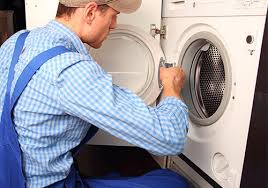
فني غسالات في شرق الرياض يقدم خدمة توصيل وتركيب الغسالات بطريقة سريعة وفعالة، مضمونة للتشغيل الآمن والموثوق.
خدمة توصيل وتركيب غسالات في شرق الرياض توفر لك السرعة والفعالية. نحن متخصصون في تقديم خدمات توصيل وتركيب غسالات بشكل فعال وسريع في منطقة شرق الرياض. سواء كنت تحتاج إلى توصيل غسالة جديدة وتركيبها في منزلك أو تبحث عن تركيب غسالة قائمة بذاتها، فإننا نقدم خدمات توصيل وتركيب موثوقة ومحترفة. فريقنا مدرب تدريباً عالياً ومجهز بالأدوات اللازمة لضمان توصيل وتركيب غسالتك بسرعة وكفاءة. نحن نهتم بتلبية احتياجات عملائنا وضمان رضاهم التام. اتصل بنا اليوم للحصول على خدمة توصيل وتركيب غسالات سريعة وموثوقة في شرق الرياض.
أسعار مناسبة وعروض خاصة على صيانة غسالات في شرق الرياض

فني غسالات في شرق الرياض يوفر أسعارًا مناسبة وعروضًا خاصة على صيانة وإصلاح الغسالات، مع ضمان جودة الخدمة والقطع الغيار.
نعتذر عن عدم توفر معلومات حول أسعار وعروض خاصة على صيانة غسالات في شرق الرياض في الوقت الحالي. للحصول على المزيد من المعلومات، يمكنك التواصل مع محلات الصيانة والخدمة في المنطقة المحددة أو البحث عبر الإنترنت للعثور على العروض والأسعار المناسبة لك. نشكرك على تواصلك ونتمنى لك حظاً سعيداً في إيجاد العروض المناسبة لك.
صيانة فورية وإصلاح فعال لجميع مشاكل الغسالات في شرق الرياض
فني غسالات في شرق الرياض متاح على مدار الساعة لتقديم خدمة صيانة فورية وإصلاح فعال لجميع مشاكل الغسالات، بمهارة واحترافية عالية.
نحن نقدم خدمات صيانة فورية وإصلاح فعال لجميع مشاكل الغسالات في شرق الرياض. فريقنا متخصص ومدرب بشكل جيد على التعامل مع مختلف أنواع الأعطال في الغسالات. سواء كانت مشكلة في الأسلاك الكهربائية، أو في الأجزاء الميكانيكية، يمكننا التعامل معها بفعالية وسرعة. نحن نفخر بتقديم خدمة عملاء ممتازة ونضمن رضاكم التام عن الخدمة التي نقدمها. إذا كنت بحاجة إلى إصلاح فوري لغسالتك، فلا تتردد في الاتصال بنا وسنكون سعداء بتقديم المساعدة.
استبدال القطع التالفة بأصلية وضمان على الإصلاح في شرق الرياض
فني غسالات في شرق الرياض يقوم بتوفير قطع غيار أصلية وضمان لجميع الإصلاحات، مع التأكد من أداء الغسالة بكفاءة عالية.
يمكنك استبدال القطع التالفة بأصلية وضمان على الإصلاح في شرق الرياض من خلال الاتصال بأحد مراكز الخدمة المعتمدة للشركة المصنعة للجهاز. يمكنك العثور على مراكز الخدمة عبر البحث على موقع الشركة على الإنترنت أو الاتصال بخدمة العملاء للحصول على المعلومات اللازمة. عند اختيار مركز الخدمة، تأكد من أنه يقدم قطع غيار أصلية وضمان على الإصلاح. يمكنك الاطلاع على شروط الضمان والخدمة من خلال الاتصال بمركز الخدمة قبل إجراء أي عملية إصلاح. لا تنسى أن تحتفظ بإيصال الإصلاح وتأكد من أن القطع المستبدلة تحمل علامة الضمان. في حالة وجود أي مشاكل بعد الإصلاح، يجب عليك التواصل مع مركز الخدمة لتصحيح الوضع.
إصلاح جميع أنواع الأعطال الكهربائية والميكانيكية للغسالات في شرق الرياض
فني غسالات في شرق الرياض متخصص في إصلاح جميع أنواع الأعطال الكهربائية والميكانيكية في الغسالات، بدقة ومهارة عالية.
نعم، يمكننا تقديم خدمات إصلاح جميع أعطال الغسالات الكهربائية والميكانيكية في شرق الرياض. فريقنا متخصص ومدرب على مستوى عالٍ ويمتلك الخبرة اللازمة لإصلاح جميع الأعطال بدقة وفعالية. سواء كانت المشكلة تتعلق بالكهرباء أو الأجزاء الميكانيكية، يمكننا التعامل معها بكفاءة عالية لضمان عودة غسالتك إلى العمل بشكل مثالي. نحن ملتزمون بتقديم خدمات ذات جودة عالية وبأسعار تنافسية، ونضمن رضا عملائنا في كل مرة. إذا كانت لديك أي مشكلة في غسالتك، فلا تتردد في الاتصال بنا للحصول على خدمة إصلاح فورية وفعالة.
تنظيف وصيانة دورية للغسالات لضمان أداء مثالي في شرق الرياض
فني غسالات في شرق الرياض يقدم خدمة تنظيف وصيانة دورية للغسالات، لضمان أداء مثالي وطويل الأمد دون أية عوائق.
لضمان أداء مثالي للغسالات في شرق الرياض، من الضروري القيام بتنظيف وصيانة دورية للجهاز. يجب تنظيف الغسالة بانتظام من الداخل والخارج باستخدام مواد تنظيف خاصة للغسالات. كما يجب التأكد من تنظيف أجزاء مثل الفلتر والبرميل والخراطيم لضمان عدم تراكم الأوساخ والرواسب. يجب أيضاً التحقق من أن الغسالة تعمل بشكل صحيح بشكل دوري، ويجب فحص الأجزاء الداخلية مثل الحزام والمحرك والمصفاة والصمامات بانتظام لضمان عدم وجود أي عوائق أو تلف فيها. بالإضافة إلى ذلك، يفضل تنظيف الأنابيب والخراطيم بانتظام للتأكد من عدم وجود انسدادات تؤثر على أداء الغسالة. عند القيام بالصيانة الدورية للغسالة وتنظيفها بشكل منتظم، يمكن الحفاظ على أدائها بشكل مثالي وتجنب الأعطال الناتجة عن تراكم الأوساخ والرواسب داخل الجهاز.
استشارات مجانية وخدمة عملاء مميزة مع فني غسالات في شرق الرياض
صيانة غسالات اتوماتيك الجبيل
فني غسالات في شرق الرياض يوفر استشارات مجانية وخدمة عملاء مميزة لتلبية احتياجات العملاء وضمان رضاهم التام بخدماته.
فني غسالات في شرق الرياض يقدم استشارات مجانية وخدمة عملاء مميزة لجميع عملاءه. يمكنك التواصل مع الفني للحصول على استشارات مجانية بشأن غسالتك وللحصول على مساعدة في حل مشاكلها. كما يتميز فني غسالات في شرق الرياض بخدمة عملاء مميزة تهدف إلى رضا العميل وتلبية احتياجاته بشكل كامل. لا تتردد في الاتصال بالفني للاستفسار عن خدماته والحصول على المساعدة التي تحتاجها.
